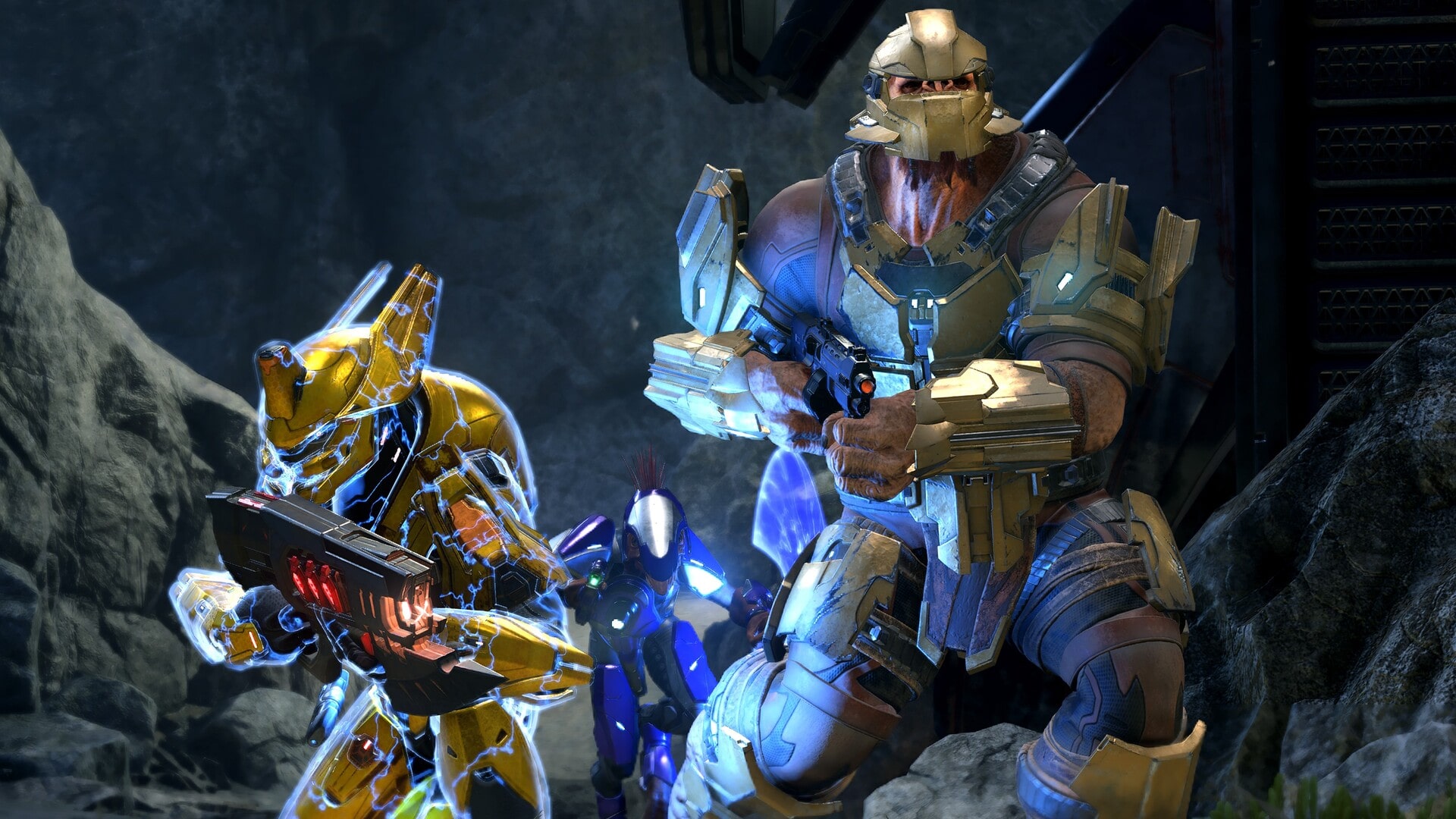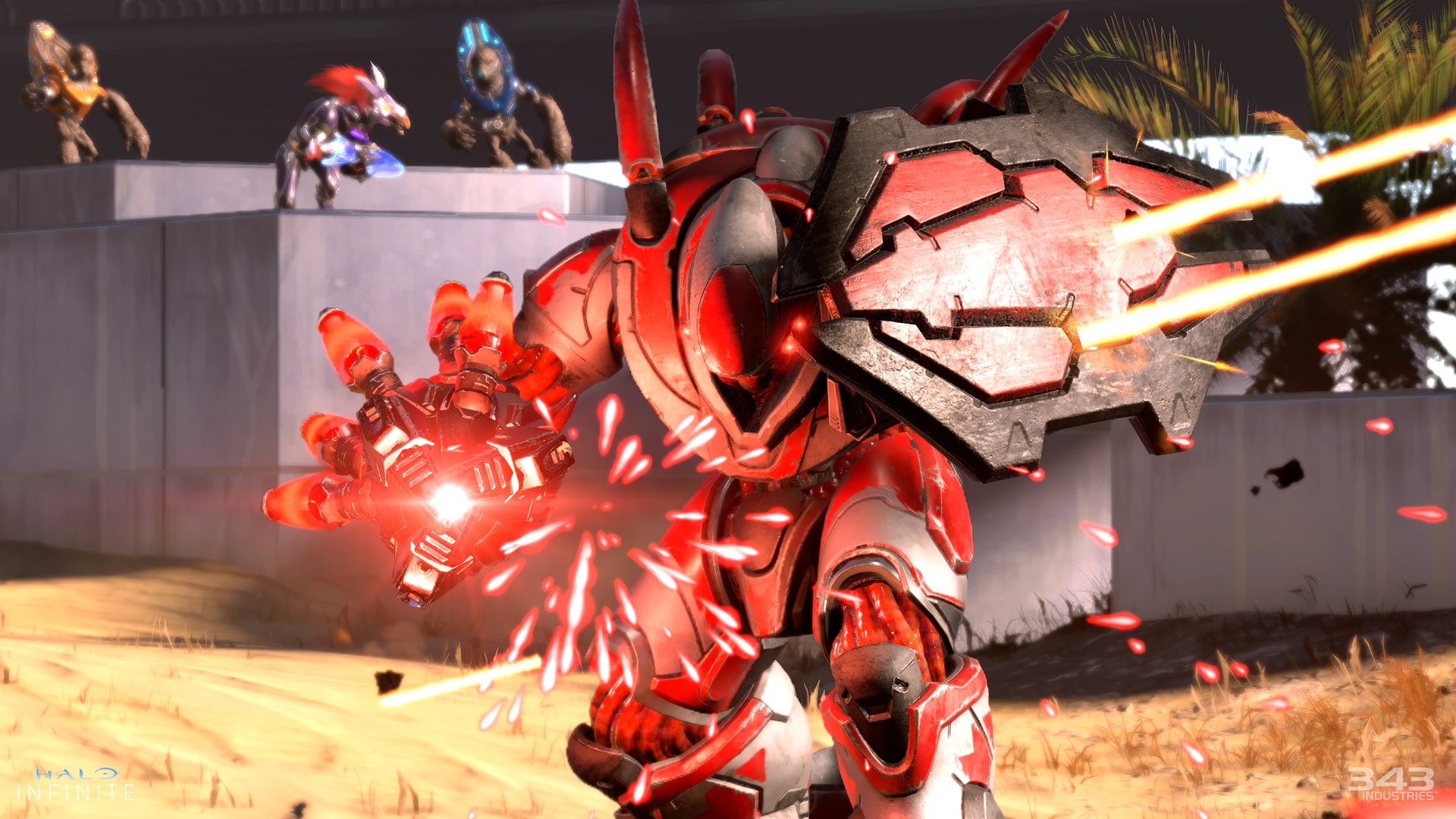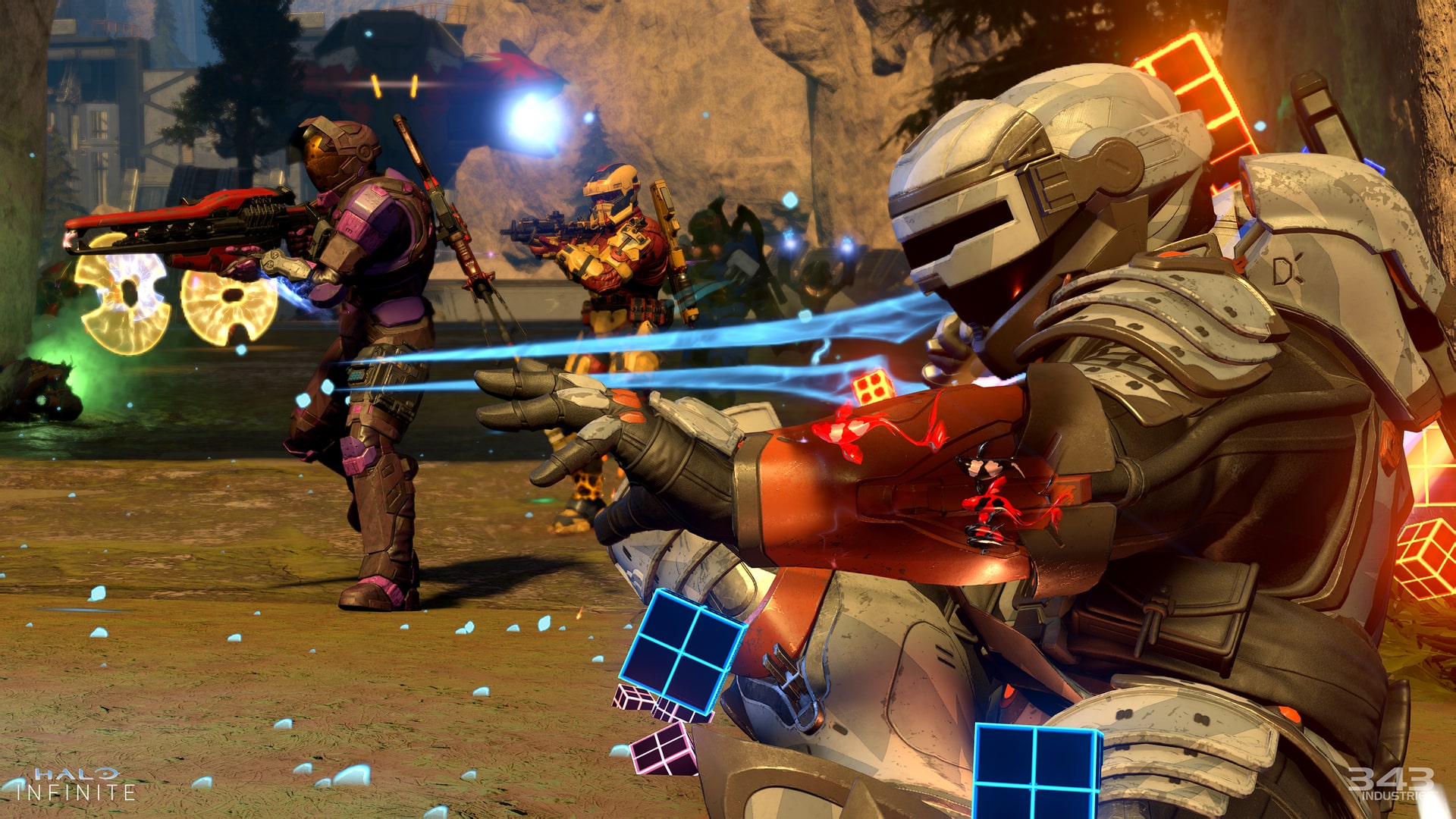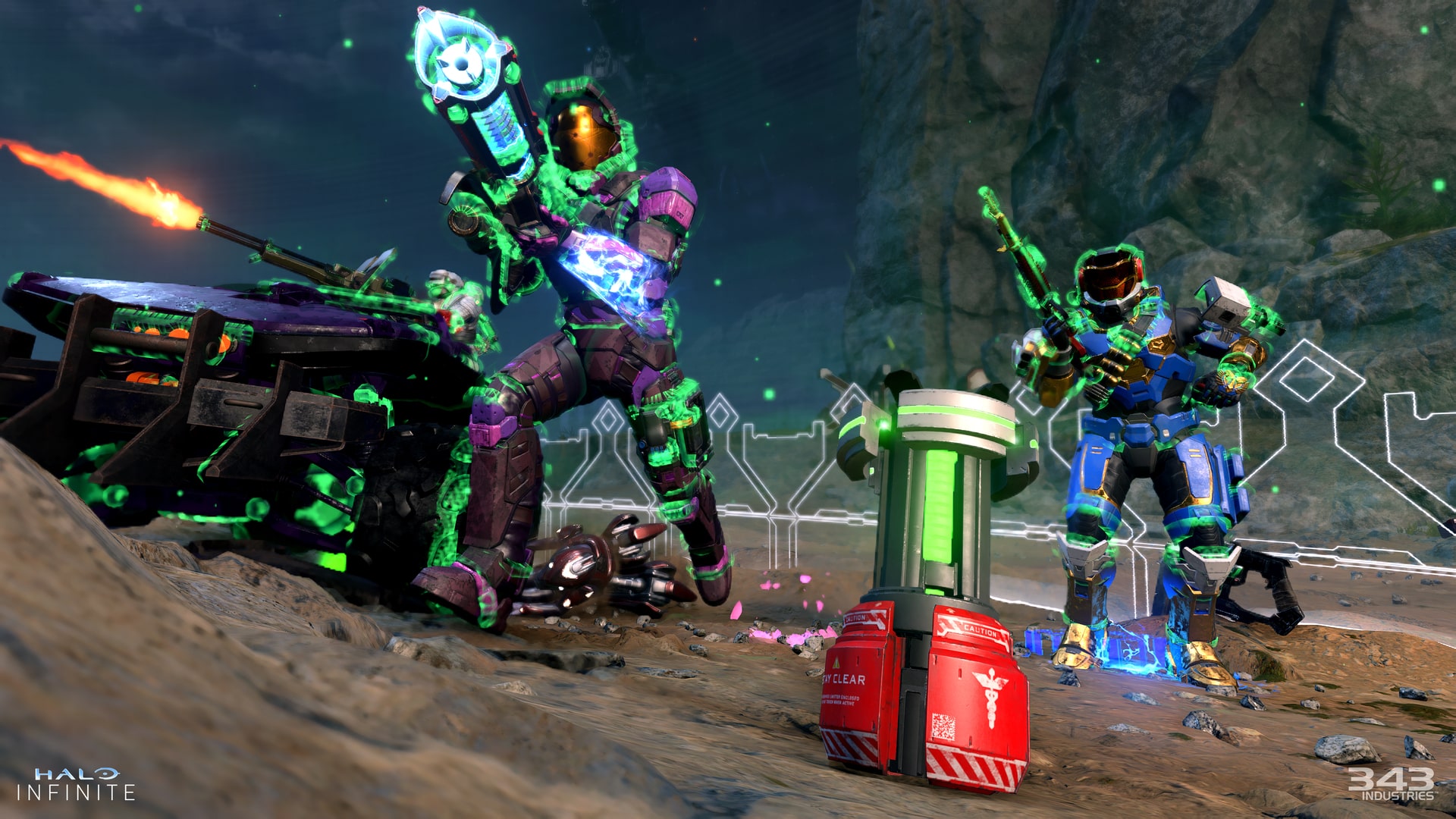Halo Infinite's new Firefight PvE mode is my favorite yet, and I can't wait to jump back in
Halo's premier co-op wave defense mode is back, and boy oh boy is it good.

Ever since Bungie introduced the concept with Halo 3: ODST, the cooperative PvE wave defense mode Firefight has remained one of my favorite ways to play Xbox's flagship sci-fi shooter. It's often the only way to enjoy combat against campaign AI outside of Halo campaigns themselves, and it's been in every game other than 4 since 2009. To see that it wasn't a part of Halo Infinite when it released in 2021 was a major disappointment, but I and many other fans hoped 343 Industries would bring it to the game post-launch.
A leak in June suggested that wish would be granted, and when Halo Infinite Season 5 kicked off in October, the developers confirmed it with the announcement that a new free-to-play iteration of Firefight called "Firefight: King of the Hill" (Firefight: KotH) would be added in a mid-season patch. That update is scheduled for December 5, and ahead of its arrival, I got a chance to go hands-on with the mode in late November — and even though I only got to play for a few short hours, I'd experienced enough to know that this is going to be my favorite version of Firefight yet.
Firefight Evolved
Like previous iterations of Firefight, Firefight: KotH pits a team of four players (or more in Custom Games) up against wave after wave of enemy units from the Halo Infinite campaign, with the difficulty of each escalating as the match goes on and supply drops between waves giving you a healthy number of weapons, ammo, and equipment pieces to work with. Some maps also feature vehicles like Warthogs you can use as well, though these don't respawn if destroyed, so being careful with them is important (you can repair them with the new Repair Field equipment, however).
That alone would satisfy me, as Halo Infinite's Banished AI are some of the most dynamic and impressive in the franchise and fighting them is a blast. But what sets this new version of Firefight apart is how it evolves the experience.
The biggest change, as the mode's name suggests, is the addition of points on the map for players to capture and hold. Controlling these zones is the only way to earn one of the five points you'll need to win, but heads up — Banished forces will constantly run in to contest you, and can even capture hills and earn points themselves to snatch victory away (you can also lose if everyone on the team dies at once). This forces your fireteam to move around the map when each new zone appears in a random location, encouraging more active and varied gameplay instead of static turtling.

Secondly, named minibosses with extra health and high-tier weapons will also occasionally spawn in alongside large numbers of regular Banished troops, resulting in thrilling moments where you and your allies have to try and focus fire them down as they lead a small army into the fray. Their presence often evokes quite a bit of tension, and they, along with the horde of foes that accompany them, challenge your squad to position well and make the most of the gear you have. For example, the final moments of one game became an intense slugfest between our fireteam and a pair of lethal Hunter bosses supported by Elite and Jackal infantry; to break the stalemate, two of my teammates distracted the Hunters while I moved behind them to hit their weak spots with my high-damage shotgun, all while our fourth kept the other forces at bay with rockets and grenades.
Speaking of difficulty, Firefight: KotH will ease it back or ramp it up on the fly with gameplay-tweaking skulls (or the lack thereof), which is a first for Firefight; in previous versions, skulls would turn on as you played regardless of your performance. Teams that go a while without any deaths will likely find themselves facing waves with higher-ranked enemies or less extra ammo, for example, while modifiers like these may not be applied to groups that are struggling. This ideally will ensure a balanced experience for every unique fireteam, though the main Normal (easier), Heroic (solidly challenging), and Legendary (tough) difficulty settings determine each match's overall level of challenge.
Get the Windows Central Newsletter
All the latest news, reviews, and guides for Windows and Xbox diehards.
These adjustments do quite a bit to freshen up Firefight gameplay individually. But together, they — along with Halo Infinite's excellent enemy AI and sandbox variety — make it more dynamic, engaging, and exciting to play than it's ever been before.
With Forge, Firefight's potential is limitless

Notably, Firefight: KotH is the first variant of the PvE mode to feature support for the incredible Forge mapmaking tool, which means that players will be able to create and share their own Firefight maps to be played in Custom Games. This is something that players have been asking for since 2010's Halo: Reach, and I can't wait to see what the community puts together now that the dream has become reality.
During my preview session, I was told that almost every aspect of the mode can be edited through Forge scripting and settings changes. This includes everything from how, when, and where enemy squads spawn and which types of AI appear to capture zone locations, whether or not there are zones, the rate at which they're captured, the number of points you need to win, weapon and gear spawns, and much more. You could even set up spawns for allied AI such as UNSC Marines or "traitorous" Banished soldiers, giving your fireteam some extra buddies to fight alongside.
We'll know what the exact limitations of custom Firefight: KotH maps and modes are once the exceptionally talented Forge community gets its hands on it soon, but overall, it sounds like the sky's the limit. And even if Halo Infinite never ends up getting an official campaign DLC, I'm glad its fans have the tools to create their own PvE experiences.
Firefight is back, and it's better than ever

After a long two-year wait, Firefight has finally come to Halo Infinite in the form of Firefight: KotH — and with all of its well-thought-out changes as well as the inclusion of full compatibility with Forge scripting and mapmaking, it's arguably the best Firefight we've ever had. It's definitely my favorite, and I think many players will end up feeling the same way once they're able to play it tomorrow.
Notably, the mode launches with nine different developer and community-made maps to play it on, as well as full integration with Halo Infinite's Match XP system. That means PvE fans finally have a highly replayable way to make progress on their battle passes, and since Season 5 added Match XP to Custom Games, you can even do so while enjoying Forge-made Firefight maps. Awesome.
Firefight: KotH is probably the best thing to come out of Halo Infinite other than Forge itself, and ever since I got to check it out, I've been itching to jump back in. Once it goes live at 11:00 a.m. PT / 2:00 p.m. ET tomorrow, I'll be doing just that — and I hope to see you fighting the Banished by my side.
Halo Infinite multiplayer (including Firefight) is free-to-play, while its campaign is $60 (but often much cheaper) on Xbox Series X|S, Xbox One consoles, and Windows PCs. Notably, you can also play it through any tier of Microsoft's Xbox Game Pass service.
Brendan Lowry is a Windows Central writer and Oakland University graduate with a burning passion for video games, of which he's been an avid fan since childhood. He's been writing for Team WC since the summer of 2017, and you'll find him doing news, editorials, reviews, and general coverage on everything gaming, Xbox, and Windows PC. His favorite game of all time is probably NieR: Automata, though Elden Ring, Fallout: New Vegas, and Team Fortress 2 are in the running, too. When he's not writing or gaming, there's a good chance he's either watching an interesting new movie or TV show or actually going outside for once. Follow him on X (Twitter).

